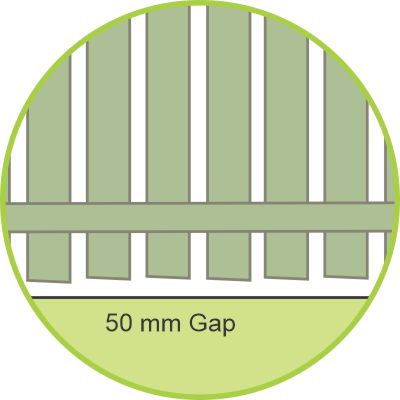When Conquer Termites comes to do an inspection at your place, we understand your main concern is if your home is being attacked by termites. But we also want to give you advice about actions to prevent and reduce the risk of foraging termites.
Termites are constantly foraging for food to feed their colony. Susceptible trees, stumps or loose timbers on the ground are a great food source for termites and can even harbour a termite nest.
What are the guidelines for termite issues around your home:
Trees
If any susceptible tree is 200 mm, or more, in diameter at 1.4 m height of the trunk, it should be drilled and tested for termites.
You should not have trees that are over 10 m growing within 5 m of the structure. They can harbour termites and their roots can breach or damage a chemical soil treatment.
Tree stumps
- Any tree stump more than 50 mm in diameter should be checked, treated and then removed.

Loose Timbers on ground
- You should not place loose timbers directly on the ground as they will become a food source for foraging termites.

Retaining walls & Garden trim
- If you have a timber retaining that is susceptible to termite attack, get it checked regularly.
Fences
- There should be a minimum of 50 mm gap from the base of the timber paling to the ground to minimise the risk of termite attack or fungal decay.

Inspection Zone around the house
- There should be a clear inspection zone around the base of your home (at least 1 m) so there are no obstructions to conceal termite activity.
Moisture
- You should ensure there is no constant supply of moisture being contributed into the ground near your home. Termites will seek this to “fuel” up before attacking your home. They need water more than timber.

If you have any concerns about the areas above, or it has been over 12 months since you last had an inspection, CALL US NOW on 1300 417 007.




